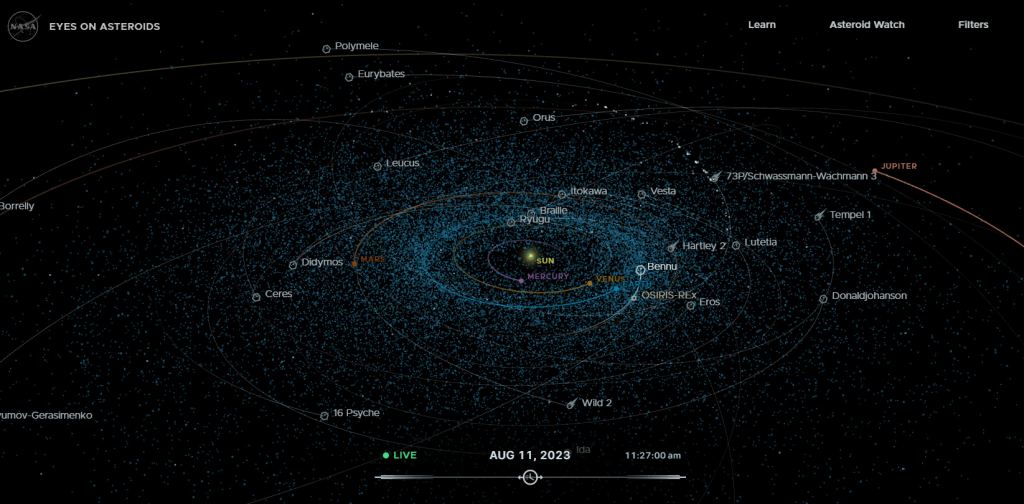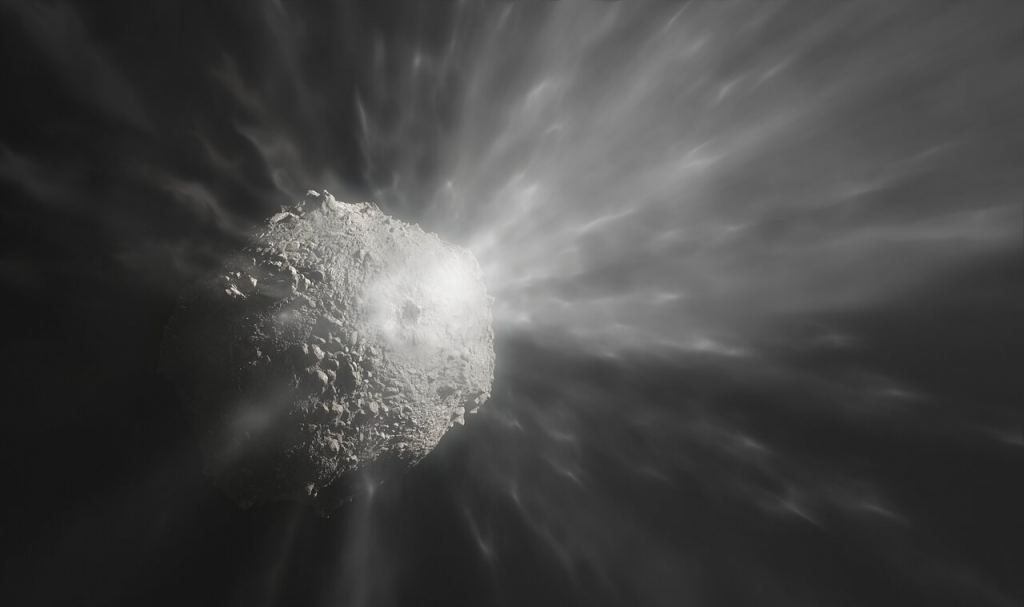New information is pushing Asteroid 2024 YR4 off of our front pages. Initial estimates gave it a 2.8% chance of striking Earth in 2032. Now, the European Space Agency says the chance of it striking our planet is down to a paltry 0.001%.
Scientists dislike expressing things in absolute terms because Nature can make fools of us all, so this is as close to zero as it’s likely to get.
2024 YR4 was discovered by the Asteroid Terrestrial-impact Last Alert System (ATLAS) telescope in Chile a couple of days after Christmas. ATLAS is an early-warning system for smaller asteroids. When it detected the asteroid on December 27th, 2024, it sent out an alert. Follow-up observations indicated the asteroid’s impact probability was greater than 1%, and that triggered our planetary defence response, which at this point consists of a greater effort to understand the rock and its trajectory.
It’s easy to get used to these asteroid warnings. However, it’s a bad idea to ignore the threat they pose. 2024 YR4 is not very large, only between 40 to 90 metres (130 to 300 ft) in diameter. Its small mass doesn’t mean it’s not dangerous. An asteroid that large can cause serious damage in a populated area. Earth has been struck many times in the past, and there are more impacts in its future.
More worryingly, follow-up observations at first showed the asteroid’s impact probability rising. At its highest rating on 18th February, it had a 2.8% chance of striking Earth. The spike of concern was dulled the next day when observations with the ESO’s Very Large Telescope cut that number in half. People unfamiliar with space, Earth, and asteroids have asked why there’s so much uncertainty. The simple answer is that everything in space is moving. The object is also tiny and dark.
The Very Large Telescope is one of the world’s most advanced telescopes and even it could barely see the asteroid, as the GIF below shows.
In the two months following its detection, the ESA’s Near-Earth Object Coordination Centre—along with other institutions—monitored the asteroid. More data is better data in this case, and observations allowed astronomers to refine its orbit to determine how much of a threat it posed.
2024 YR4 follows an elliptical orbit around the Sun and crosses Earth’s path, making it a near-Earth Object (NEO). It takes almost four years to complete an orbit, and its last perihelion was on 22 November 2024. Its closest approach to Earth was on Christmas, two days before its discovery. At that time, it came to within 830,000 km of Earth. In December 2028, it will make its next closest approach at just more than 8 million km of Earth. Unfortunately, between this April and leading up to the next approach, none of our ground-based telescopes will be able to see it.
One problem in determining the impact threat is that everything in space is moving. Nothing is still. So, each time the asteroid comes near the Earth or the Moon, the gravity from both bodies has a chance of changing 2024 YR4’s orbit. These are called gravitational keyholes, and they complicate efforts to determine its orbit.
This rising and then falling impact probability is an established pattern in asteroid detection and monitoring. At first, there’s more uncertainty, but as astronomers continue to observe it, uncertainty is reduced.
What it boils down to is this: We spotted another small yet potentially dangerous rock with a chance to strike Earth. We watched it and saw that its chance of striking us shrank. Now, the rock will disappear into the blackness of space for three years.
Where does that leave us?
Each time another asteroid approaches, it triggers concern about protecting Earth. Should we launch a nuke and blow it to pieces? How about a kinetic impactor to change its orbit slightly? How about evacuating people from the impact zone?
We’re developing ways to protect the planet. NASA’s DART (Double Asteroid Redirection Test) showed that a relatively small mass can deter an approaching asteroid. Nukes are not needed and, in fact, can create an unpredictable shower of debris.
One proposal for asteroid redirection envisions kinetic impactors waiting to be launched on short notice. They can be at a Lagrange point or possibly on the lunar surface, on standby until needed. The more advance notice we have, the smaller the kinetic mass needed to deter an asteroid.
The main effort right now is centred on finding all dangerous asteroids and constraining their orbits. The upcoming Vera Rubin Observatory will detect many asteroids and will help us identify which ones are hazardous.
The type of massive asteroid that rocked the dinosaurs is increasingly unlikely. It was between 10 and 15 km in diameter, and large asteroids like it tend to remain stable in the asteroid belt. But the smaller ones in the decameter size range are more likely to be perturbed out of their orbits and become NEOs. It’s those ones we really have to worry about.

Asteroids are like pandemics. There’s always another one in the future. It’s simply nature. The danger from this one seems to have diminished, but another one will eventually come close.
Though the danger posed by 2024 YR4 has diminished, the overall threat posed by the asteroid population remains the same. In a sense, it’s not about any individual asteroid. It’s about our understanding of the risks in our space environment and how we can protect ourselves and Earth.
We’re not fully prepared to deflect an incoming asteroid if necessary, but we’re working towards it. In the meantime, get used to the occasional news article about asteroids with tiny yet real chances of striking Earth. 0.001% is tiny, but it’s not zero.
Source link
Read More
thesportsocean
Read our previous article: SPHEREx launches this week to conduct a cosmic census
